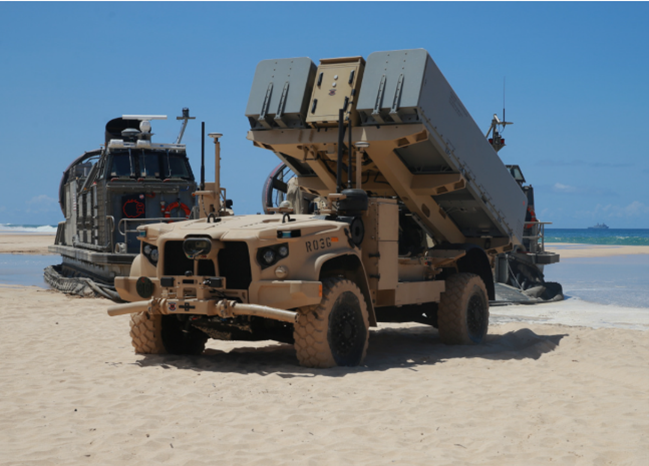
During the US Navy’s Large-Scale Exercise (LSE) 2021 – a global event in which it tests and validates the Navy and Marine Corps’ operating concepts – Oshkosh Defense was able to successfully demonstrate the Remotely Operated Ground Unit for Expeditionary (ROGUE) Fires. ROGUE is an unmanned missile launcher built on a Joint Light Tactical Vehicle (JLTV) chassis.
In the test, a ROGUE Fires equipped with a Navy Marine Expeditionary Ship Interdiction System (NMESIS) launcher successfully fired a Raytheon Naval Strike Missile (NSM) and scored a direct hit on a target at sea.
The ROGUE Fire was developed for anti-ship missile operations, is an unmanned ground vehicle (UGV) that takes advantage of the JLTV’s off-road mobility and payload capacity, along with Oshkosh’s autonomous vehicle technologies. It can be modified to suit mission requirements, and may be operated in teleoperator or leader-follower modes, protecting personnel from threats by removing them from the vehicle entirely.
“ROGUE Fires was purpose-built and leverages next-generation capabilities from several proven Oshkosh Defense vehicle platforms and technologies,” said Pat Williams, Vice President and General Manager of US Army and Marine Corps Programs. “Much like the JLTV itself, ROGUE Fires is tailorable to the mission at hand. The flexible design allows for the integration of scalable weapon system payloads to offer the combatant commanders flexibility based on the mission’s requirements.“
After receiving the JLTV production contract in 2015, Oshkosh Defense has been working with weapon system manufacturers to integrate and test various weapon system payloads and levels of firepower onto the JLTV platform.
“The successful LSE demonstration validates the maturity of ROGUE Fires as a weapons platform and highlights its ability to add significant firepower and capability into the light tactical wheeled vehicle fleet,” Williams stated.
